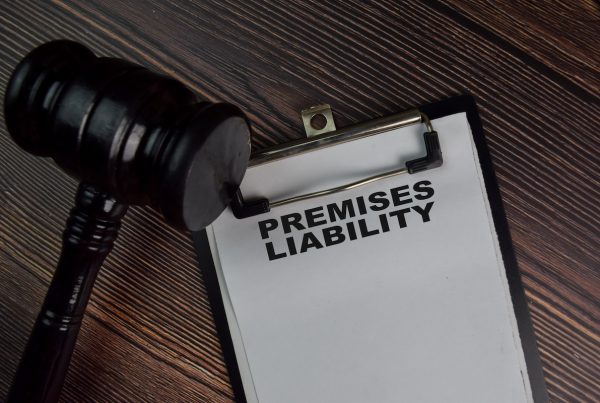Lawyers often need to consciously seek out evidence to prove their cases. This conscious case-building is the friendly version of the confirmation bias and it is an essential part of being a good lawyer. We seek out evidence that will convince others that our client has the better case.
The unconscious version of the confirmation bias, however, is a constant and unrelenting danger to attorneys: people naturally favor information that is consistent with their beliefs or desires and we ignore or discount evidence to fails to support (or even disproves) our beliefs and desires. We do this without realizing that we are doing it. More specifically,
Confirmation bias is the tendency to search for, interpret, favor, and recall information in a way that confirms or supports one’s prior beliefs or values. People display this bias when they select information that supports their views, ignoring contrary information, or when they interpret ambiguous evidence as supporting their existing attitudes.
It is for this reason that opposing counsel often interpret the same bits of evidence in starkly different ways. Quite often, a lawyer will overlook the significance of evidence that opposing counsel locks onto. This is the confirmation bias at work. It causes many lawyers in many situations to see only the best parts of their clients’ cases, ignoring glaring deficits. This doesn’t only happen to lawyers. Psychologist Jonathan Haidt suggests that all of us (even non-lawyers in non-legal settings) have little lawyers inside of our heads working overtime:
The confirmation bias dominates our individual internal thought process: “Reasoning and Google will take you wherever you want to go.” We do our research much as a lawyer. It is not even-handed, and we can believe almost anything that supports our goals. That said, “Anyone who values truth should stop worshiping reason.” Reason is much better at confirming what we want to believe than at finding the truth. “We’re really good lawyers.”
Again, the fact that the unconscious version of the confirmation bias is unconscious is what makes it dangerous. It causes the alligators in your favorite swimming hole to appear invisible. In Thinking, Fast and Slow, behavioral economist Daniel Kahneman attributes the unconscious version of the confirmation bias to the rough, rapid and emotional version of human information processing, which he calls “System 1”:
[P]eople (and scientists, quite often) seek data that are likely to be compatible with the beliefs they currently hold. The confirmatory bias of System 1 favors uncritical acceptance of suggestions and exaggeration of the likelihood of extreme and improbable events.
You might think that because you are now quite aware of the dangers of the confirmation bias, that you will be consciously on the lookout for this bias and it will thus be less dangerous to your practice of law. That would be over-optimistic and contrary to prevailing psychological expertise. System one operates unconsciously. Your attempted vigilance is done by your slow, deliberative and logical mode of thought Kahneman refers to as “System 2.” The problem is that in live time System 1 usually operates under the radar of System 2. Kahneman has repeatedly expressed pessimism that humans can compensate for the confirmation bias, expressing pessimism that even he (someone who rigorously studies human biases) can flag it in real-time. “Confidence is determined by the coherence of the story one has constructed, not by the quality and amount of the information that supports it. Can overconfident optimism be overcome by training? I am not optimistic…”
Given these dangers, what should lawyers do about this ever-present danger of the confirmation bias? It’s not a hopeless cause. We can each do some extra work to try to see our own cases through the eyes of our opponents. Here are a few examples
- Do a “premortem” of your case prior to trial. Kahneman discusses this technique in Thinking, Fast and Slow (2011). The procedure is simple: when you are about to make a big decision regarding your case, gather a group of your firm’s lawyers for brief meeting. Tell them something like this: “Imagine that we are a year into the future. We implemented our trial plan as it now exists. The outcome was a disaster. Please take 5 to 10 minutes to write a brief history of that disaster.” Kahneman states that this has the benefit of forcing members of the group to see the case more clearly through the eyes of opposing counsel.
- Do you really have a great case? Maybe you are blind some big problems. To counteract this, conduct focus groups with the help of neutral parties. The confirmation bias makes the dangerous parts of your case invisible to you, but not so much to neutral parties, because they are not cheerleaders for your client. Whether these are in-person focus groups or online focus groups (discussed in the Simon Law Firm Podcast, The Jury is Out Episode 111), neutral parties will be better able to see what you cannot see. It’s not always fun to hear what they will tell you in live time, but it’s far better to hear the bad news from mock jurors (when you can often cure or diminish the problem) than to hear it from opposing counsel in front of a real-life jury.
- We often like our clients as people. We want to believe that they will do well in court. But will they? Maybe it’s better to force ourselves to reframe the task of depositions or trial preps like this: depositions and courtrooms are dangerous places where even well-prepared clients sometimes blurt out unexpected things that hurt your case. This new frame often requires longer deeper prep so that you more fully understand how your client will respond to intense courtroom questioning. This reframe also requires putting on your opposing counsel hat and aggressively cross-examining them to the point where they start to wobble. I tell my clients what I’m about to do before pushing them hard and they appreciate the importance of this prep. For more on preparing your client for trial, consider listening to the Simon Law firm Podcast, The Jury is Out Episode 111).
- For writing projects, the long hours and fatigue tempt us to believe that we’ve covered all of the necessary topics and that we’ve communicated all of our positions clearly. But have we? There’s a simple technique that is often inconvenient under the crush of trial work: Walk away from your work for a few days and then re-read it with “new eyes.” After taking this mini-vacation, typos and unclear phraseology often leap off the page. Another version of this technique is to find a co-worker who is willing to assume that there are serious weaknesses and problems with your written work and is ready to enthusiastically go find those problems. The last thing you want here is a reader who loves your work and likes complimenting you.
The confirmation bias casts an evil spell over our work as attorneys, making it impossible to see problems, even major problems. Luckily we can counteract much of this danger by using tactics like those set forth above. It’s going to take some humility and (sometimes) a lot more work, but it pays off for our clients.






